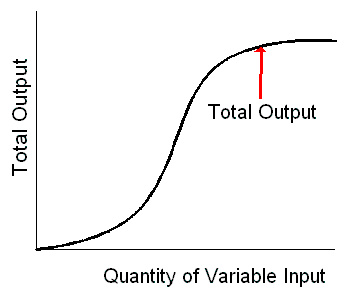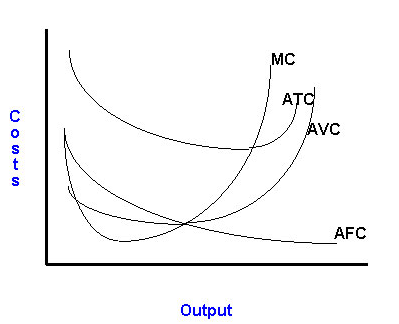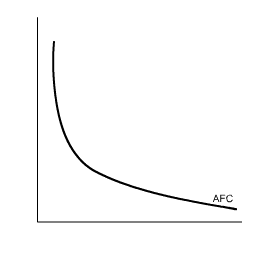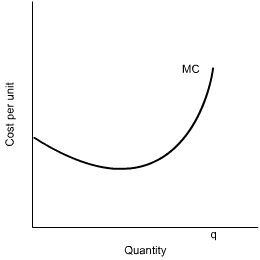Do you want BuboFlash to help you learning these things? Or do you want to add or correct something? Click here to log in or create user.
Subject 3. Cost Measures
#cfa #cfa-level #economics #has-images #microeconomics #reading-15-demand-and-supply-analysis-the-firm
Factors of Production


A firm is an institution that hires factors of production and organizes them to produce and sell goods and services. Such factors include land, labor, capital, and materials.
The total product curve shows how total product changes with the quantity of variable input employed.

As more and more units of a variable resource are combined with a fixed amount of other resources, employment of additional units of the variable resource will eventually increase output only at a decreasing rate. Once diminishing returns are reached, it will take successively larger amounts of the variable factor to expand output by one unit.
The law of diminishing returns basically explains the old adage: "too many cooks spoil the broth," or too much of a good thing is bad.
Total, Average, Marginal, Fixed, and Variable Costs
To produce more output in the short run, the firm must employ more variable inputs, which means that it must increase its costs. In the short run, a firm's total costs (TC) can be broken down into two categories: fixed costs and variable costs (TC = TFC + TVC). Which costs are fixed and which costs are variable depends on the time horizon being dealt with. For a short time horizon, most costs are fixed. For a long time horizon, all costs are variable.
- Total Fixed Cost. The sum of the costs that do not vary with output. They will be incurred as long as a firm continues in business and the assets have alternative uses. Examples of fixed costs include rent, property taxes and insurance premiums.
- Average Fixed Cost. Total fixed cost divided by the number of units produced. It always declines as output increases.

- Total Variable Cost. The sum of those costs that rise as output increases. Total variable costs are zero if output is zero. Examples are wages paid to workers and payments for raw materials.
- Average Variable Cost. The total variable cost divided by the number of units produced.
- Average Total Cost. Total cost divided by the number of units produced. It is sometimes called per unit cost.
ATC is high at low levels of output, decreases as output increases (since fixed costs are spread across more units), and then increases as the firm's maximum capacity is approached (since marginal costs increase). - Marginal Cost. The change in total cost required to produce an additional unit of output.

The law of diminishing returns implies that the marginal costs of producing each additional unit will increase by increasing amounts. Initially, as output expands, the cost of producing each additional unit of output falls, but then begins to rise as the firm approaches its maximum capacity (e.g., too many workers, congested production lines).

Over the output range with increasing marginal returns, marginal cost falls as output increases. Once a firm confronts diminishing returns, larger and larger additions of the variable factor are required to expand output by one unit. This will cause marginal cost (MC) to rise. As MC continues to increase, eventually it will exceed average total cost. Until that point, MC is below ATC (per unit cost), bringing ATC down. When MC is greater than ATC, the additional units cost more than the average, and ATC must increase. A U-shaped short-run average total cost curve results.
The vertical distance between the AVC and ATC curves measures AFC. The vertical distance between the AVC and ATC curves gets smaller as output increases because AFC decrease as output expands.
If you want to change selection, open original toplevel document below and click on "Move attachment"
Summary
| status | not read | reprioritisations | ||
|---|---|---|---|---|
| last reprioritisation on | suggested re-reading day | |||
| started reading on | finished reading on |
Details
Discussion
Do you want to join discussion? Click here to log in or create user.